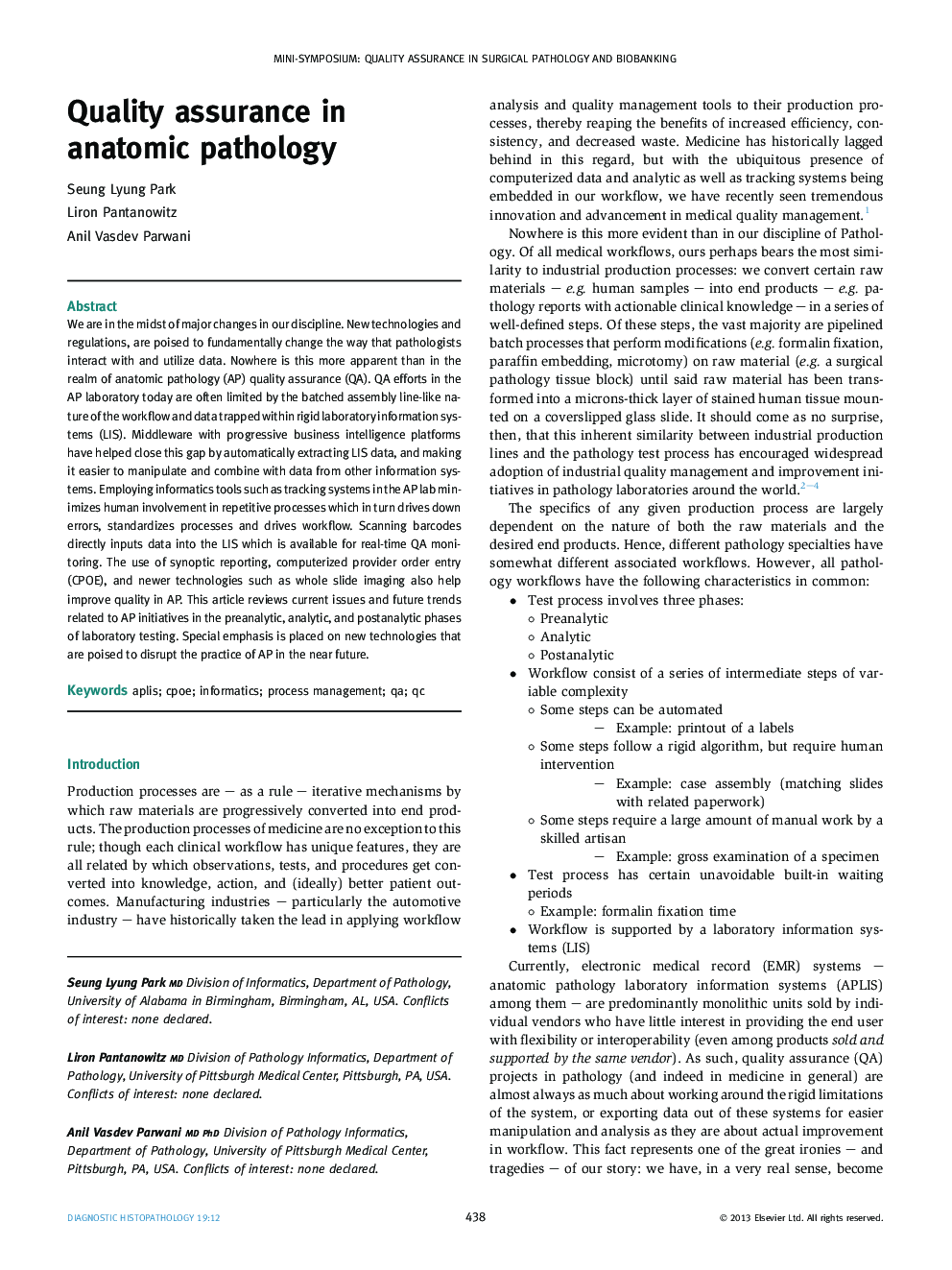| Article ID | Journal | Published Year | Pages | File Type |
|---|---|---|---|---|
| 4131167 | Diagnostic Histopathology | 2013 | 9 Pages |
We are in the midst of major changes in our discipline. New technologies and regulations, are poised to fundamentally change the way that pathologists interact with and utilize data. Nowhere is this more apparent than in the realm of anatomic pathology (AP) quality assurance (QA). QA efforts in the AP laboratory today are often limited by the batched assembly line-like nature of the workflow and data trapped within rigid laboratory information systems (LIS). Middleware with progressive business intelligence platforms have helped close this gap by automatically extracting LIS data, and making it easier to manipulate and combine with data from other information systems. Employing informatics tools such as tracking systems in the AP lab minimizes human involvement in repetitive processes which in turn drives down errors, standardizes processes and drives workflow. Scanning barcodes directly inputs data into the LIS which is available for real-time QA monitoring. The use of synoptic reporting, computerized provider order entry (CPOE), and newer technologies such as whole slide imaging also help improve quality in AP. This article reviews current issues and future trends related to AP initiatives in the preanalytic, analytic, and postanalytic phases of laboratory testing. Special emphasis is placed on new technologies that are poised to disrupt the practice of AP in the near future.
